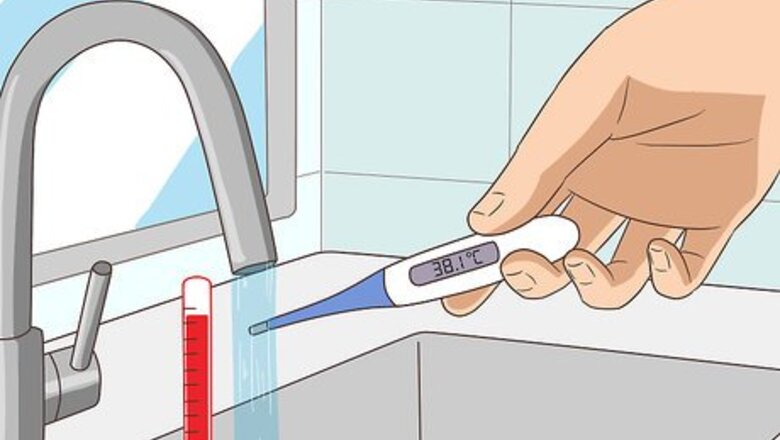
views
Raising the Temperature of the Thermometer

Run the thermometer under hot water for a quick fix. If you're trying to convince someone you have a fever, you may need to fake a thermometer reading. One way to increase the temperature on a thermometer is to use hot water. Place the tip under a tap with warm water, and leave it there until you see the temperature go over 100.5 degrees Fahrenheit (38.1 degrees Celsius). Notice the term 'quick fix.' This usually only lasts for about 2-3 minutes, maybe 4. Don't let the thermometer heat past 102 degrees Fahrenheit (39 degrees Celsius)-you could be busted for lying or get rushed to the hospital unnecessarily! The latter will probably happen if it is still a possible temperature, but if it rises above 107 degrees Fahrenheit (42 degrees Celsius) you will most certainly be seen as a faker.
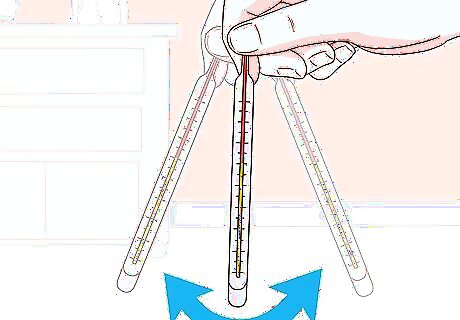
Shake a mercury thermometer to increase the reading. Shaking a mercury thermometer while holding the tip can make the temperature higher. Be careful, though, because if you are too violent, it will reach an impossibly high temperature and you will be busted for lying. Also, don't shake so hard that you shatter the glass. A mercury thermometer is the type that has a metal tip on 1 end. The rest of the thermometer is glass and has numbers printed on it. The mercury rises in the thermometer to show the temperature. Hold it by the metal tip when shaking it. Point the rest of the thermometer towards the floor, and shake it back and forth so that the temperature reading increases.

Heat a digital thermometer by rubbing the tip between your fingers. Hold the thermometer as still as you can with 1 hand. Hold the tip of the thermometer in between your thumb and index finger on the other hand. Rub your thumb and finger together as fast as you can to raise the reading on the thermometer. A digital thermometer is usually a plastic frame with a metal tip and a digital readout on the other end.

Eat or drink something warm before having your temp taken by mouth. This works great if you know that someone will be watching you take your temperature. Eat or drink something warm, like soup or tea, just before they take your temperature. Hold a little bit of the food or drink in your mouth for a few seconds before swallowing. You can wait until someone comes in to watch you to take your temperature, then swallow quickly. You could even save some of the warm liquid under your tongue to stick the thermometer in during the reading. Don’t make the drink so hot that you burn your mouth. It should feel comfortable in your mouth, not painful. In some cases, if you have a trusting parent/guardian, you can read out what the thermometer “says” to them. As long as they don't see it, and it's not too far from your real temp.
Making Yourself Warm, Flushed, and Sweaty
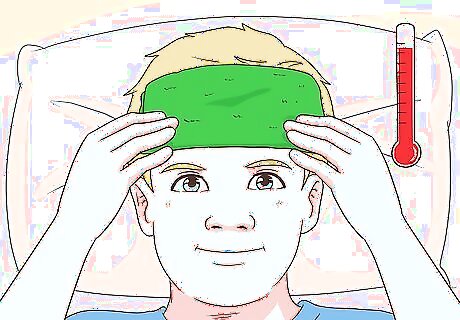
Heat your forehead with a hot water bottle or heating pad. Press a hot water bottle against your forehead for a few minutes to make it feel warm to the touch. Alternatively, use a heating pad on a low setting to warm your forehead, but make sure you put something between your face and the heating pad, such as a towel. You don't want to burn yourself! When someone comes in to check on you and feels your forehead, it’ll be warm enough that they’ll think you have a fever. The hot water bottle trick is a classic one when faking a fever, and has been used for decades with great success.

Eat spicy foods to raise your temperature naturally. Spicy foods, like jalapeños, chiles, or peppers, can actually increase your body temperature. If you have something like this on hand, eat a little bit to raise your temperature naturally. Don’t overdo it, though—you don’t want to get sick or be in serious pain from eating something too spicy! If you overdo it and eat something too spicy, drink some milk. This will help mitigate some of that heat. Another great option to try is a bowl of curry. Try eating that for lunch before faking your symptoms.

Exercise or hide out under a blanket to make yourself look flushed. The simplest thing to do is to cover your head with a blanket for a few minutes. The reflected heat will make you look flushed, as well as increase the temperature of your forehead. Alternatively, do some exercises, like jumping jacks or jogging in place, to make your face flushed. The added rosiness to your skin will make the fever act more believable.

Press a washcloth to your skin or spritz your face to make yourself sweaty. Run a washcloth under warm water for a few minutes. Once it's warm, place it over your face, leave it there for a few minutes, then take it off. Alternatively, spritz your face with a fine mist from a spray bottle full of water, instead. Make sure your face isn’t soaked—you only want the appearance of sweaty, clammy skin.
Adding Symptoms
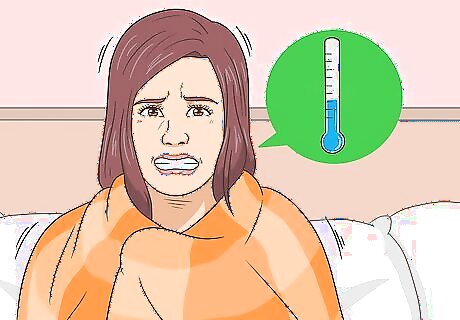
Say that you’re cold, not hot. People with a fever often feel cold, even though their skin is warm to the touch. If someone comes to check on you, be sure you’re under the covers or are wearing warm clothes. Tell them you’re cold and think you have a fever. They might tell you to not use so many blankets so you cool down a bit. Tell them you're too cold. They might pull the blanket off of you. When they do, complain about it being too cold. Add a few subtle shivers in to make your act more convincing. You don't have to shake your entire body; a trembling jaw will go a long way.

Act like you’re tired. If you want to fake a fever, you can't be bouncing around like you feel good. You need to be dragging your feet and acting like you don't have any energy. For example: When you're sitting down, lean against your arm, like you can hardly keep your head up. If you're standing, allow your body to slouch forward. You can even slump to the side and stumble a bit. Try lowering your gaze so that your eyes are partially closed. This will make them look as if they’re too heavy to fully open.
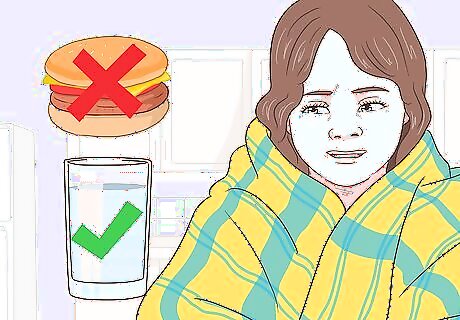
Pretend that you don’t have an appetite. Another symptom of a fever is a lack of appetite. If someone asks if they can get you anything, don’t ask for a hamburger and fries! Instead, ask for water, tea, or juice. Save the snacking for when you’re all alone, or ask for something simple, like toast or soup. If you really want to make an impact, turn down even your most favorite food. This may help people believe that you really are "sick."

Sniffle, sneeze, or cough to fake a cold. Cold symptoms often go hand in hand with a fever, so you could add a few sniffles, a cough, or sneeze to your act. Scatter some tissues around your bed or room to make it look more believable. Eating spicy food can also make your nose run!

Fake a headache or stomachache instead of a cold. If you aren’t confident faking cold symptoms, complain of either a headache or a stomachache instead. Hold the part of your body that you say doesn’t feel good. If you pretend to have a stomachache, go to the bathroom and wait for longer than usual before coming back out. For instance, you could say, “My tummy really hurts" or "My head feels like it is spinning."

Don’t overdo it. Your act should be realistic, not dramatic and unbelievable. Add only 1 or 2 symptoms to the “fever” and don’t act as though you are dying from a mystery illness. If you take it too far, the person could either realize you’re faking or believe the act and want to take you to the doctor. For instance, you don't want to be coughing, saying you need to vomit, and moaning while you roll on the floor. That's a bit too much.
Confessing If You’re Caught

Admit you’re faking if someone confronts you. If your parent catches you heating up the thermometer or pressing a hot water bottle to your head, admit that you are trying to fake a fever. Though you might be tempted to deny what you’re doing, continuing the act when you’ve already been caught will only get you in more trouble. For instance, you could say, “You’re right, I was only pretending to be sick.”

Explain why you’re faking sick. Your parents/guardians are likely going to be very upset that you were taking such extreme measures to stay home from school, practice, or other obligations. Be honest about the reason you don’t want to go, rather than creating more lies. Share your feelings without making excuses. For example, you could say, “I have a huge history test today and I didn’t study. I was faking sick so that I wouldn’t fail the test.”

Apologize for lying. Now that you’ve come clean, sincerely apologize for trying to trick them. Make it clear that you know what you did is wrong, and agree to be more honest in the future. Recognize that they might find it hard to trust you now that you’ve been caught in a lie. For example, you could say, "I'm sorry for what I did. I understand that it was wrong, and I promise to never do it again."

Accept the consequences. Your parent/guardian may punish you if they find out. Rather than arguing or talking back, accept the consequences for lying and avoid doing it again. Be careful not to get caught. You will have to work hard to earn back their trust by being honest, responsible, and helpful.The punishment could be much worse if you faked a fever and had to repeat the class because you missed too many classes. You could be sent to a boarding school or made to do physically demanding work so that you learn the value of studying.












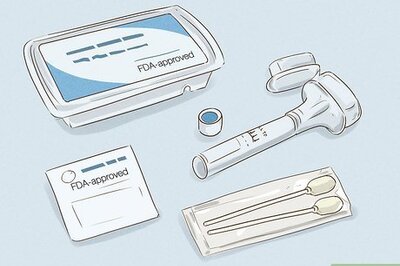
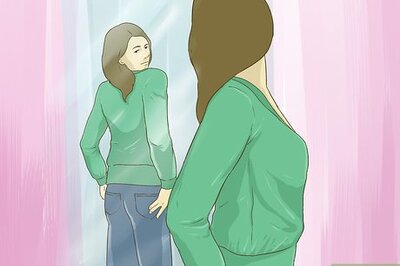



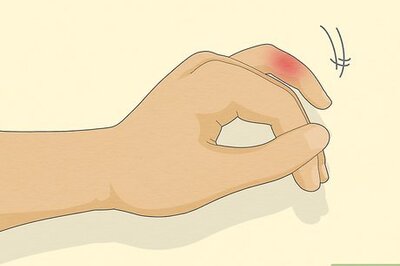

Comments
0 comment